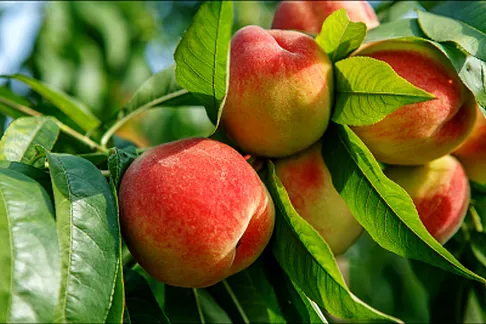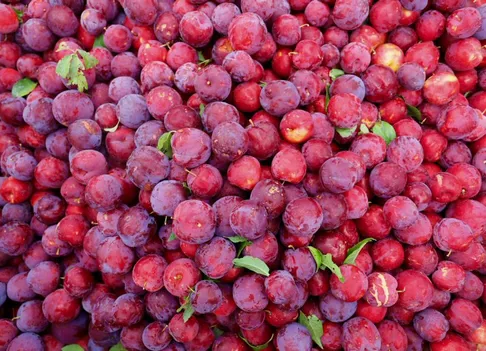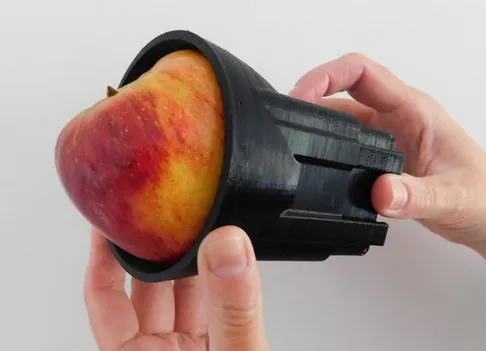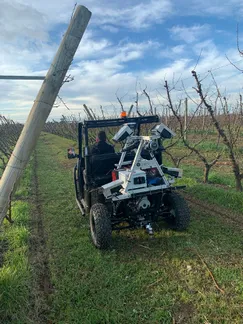The Australian stonefruit industry is confident that a new sensory technology research project can help build on its export development work and position itself as a supplier of high-quality stone fruit to the world.
Launched this week, the ‘Sensors for Summerfruit’ is a 2.5-year, $1.1 million Food Agility Cooperative Research Centre (CRC) project, involving three technologies which are being developed and tested. Summerfruit Australia Ltd CEO Trevor Ranford says while some growers in the industry have already been using some high-quality technology, the industry is looking for these new sensors to take accuracy and effectiveness to a new level.
"There is some equipment that is currently available, such as the DA meter and other tools so this is an opportunity to build on the material and information that has been collected from there, and other similar equipment/technology," Mr Ranford said. "It will assist the grower in being able to select the right fruit at the right time in the orchard and ensure that it satisfies the requirements of the customer and is able to maintain appropriate travel-life to and shelf life in relevant markets. We hope the technology can help us expand on the past two years of export development and expansion, not only to China but other important markets."

The sensors will be calibrated on Agriculture Victoria’s Tatura SmartFarm in Goulburn Valley, and then road-tested in commercial orchards and packhouses in Goulburn Valley, Swan Hill, Cobram, and Sunraysia and some of the major interstate growing regions.
In the 2019/20 season alone the Australian industry exported over 21,000 tonnes of stonefruit worth $89.11 million. Mr Ranford says the industry has spent years improving the understanding of consumer preferences, in more than 40 export markets. Exports have increased annually by an average of 12 per cent for the last 10 years.

Photo: Plums during harvest time (credit: Anika Berkman)
"The industry is always looking at how we can improve our quality, both domestically and internationally," he said. "It has been shown, over the past couple of years, particularly into our export markets, that if we are consistently producing high-quality fruit the return per/kilogram to growers is extremely strong. As we are not a large producer from a world perspective, the aim is ensuring that we are producing high-quality fruit to suit high-quality markets."
The aim is for the technology to work on all forms of stonefruit; peaches, plums, apricots and nectarines.

Photo: Rubens Technologies Fluorescent Spectrometer
One of the sensors; Rubens™ Fluorescent Spectrometer, will detect sweetness, firmness and robustness for transport. Mr Ranford admits that hand-held device will need to have adjustable components to switch between the different stonefruit, and still provide accurate readings.
"The sensory work will build on the DA Meter and give growers hand-held equipment that can be put next to a piece of fruit to get specific readings of certain aspects of quality," Mr Ranford said. "One of the biggest problems industry faces is under-ripe fruit being sold in store. When we lose a consumer because of poor eating quality we potentially lose them for the whole season. Innovative technology, such as is being planned as part of this project, will give growers the confidence to select those parts of the orchard that meet the required specifications, and then harvest that fruit at the appropriate ripeness, with the appropriate quality and flavour."
 The other two sensors; RMIT’s Bistatic LiDAR and Green Atlas’ Cartographer, will operate in the orchard helping to assess health status and predict fruit size, yield and maturity. "The project aims to develop the science behind the selection of the right fruit parameters, then being able to build that into other orchard equipment. Growers will have a platform within an orchard that allows for equipment to move rapidly throughout the orchard and taking appropriate readings," Mr Ranford said. "Then they can download the relevant information on a particular tree, or block of trees. " Photo: Green Atlas’ Cartographer
The other two sensors; RMIT’s Bistatic LiDAR and Green Atlas’ Cartographer, will operate in the orchard helping to assess health status and predict fruit size, yield and maturity. "The project aims to develop the science behind the selection of the right fruit parameters, then being able to build that into other orchard equipment. Growers will have a platform within an orchard that allows for equipment to move rapidly throughout the orchard and taking appropriate readings," Mr Ranford said. "Then they can download the relevant information on a particular tree, or block of trees. " Photo: Green Atlas’ Cartographer
Mr Ranford added it is looking like a good start to the stonefruit season, with the majority of regions having good lead-up rain, which reduced the pressure on water supply.
"All the regions also had their chill requirements and that helps fruit set and flowering," he said. "At the moment, the growers who I talked to are happy with what they are seeing on the tree. While there are some unknowns or variables with climatic conditions, such as the odd bit of hail, so far this has not caused any major issues. So, while there are a few growers still struggling with the effects of drought, the majority of growers are sounding hopeful and confident at this point in time."
The Food Agility CRC project is being led by Agriculture Victoria in collaboration with RMIT University, Summerfruit Australia Ltd, and Australian technology companies Green Atlas and Rubens Technologies. While this project is not specifically receiving any funding from Tuesday night's Federal Budget, Food Agility CRC Chief Scientist David Lamb says projects like this highlight the direction the agriculture industry is headed.
“With Federal Budget now live, and $328M allocated to growing our food and fibre exports ($222M for digital services to take farmers to market), the announcement of our Sensors for Summerfruit project is even more exciting," he said. "The 'Busting Congestion for Agricultural Exporters Package' is set to enliven (even more) allied digital and tech innovation in agrifood to give our producers the edge in the export marketplace. And this project is an example of how.”
For more information
Trevor Ranford
Summerfruit Australia
Phone: +61 417 809 172
ceo@summerfruit.com.au
www.summerfruit.com.au
